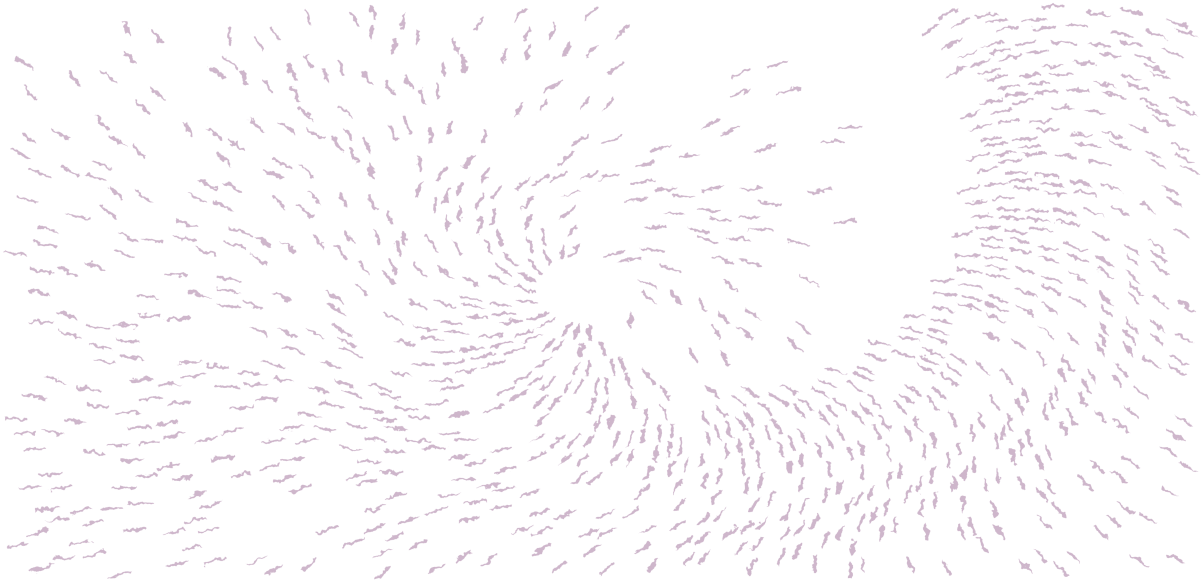Asset
Resilience
Resilience

The case for asset resilience
A confluence of rising downtime costs, chronic labour shortages and health and safety risks are driving a shift towards robot-led infrastructure monitoring and predictive maintenance. Critical infrastructure assets - including oil and gas, heavy industry and renewable energy sites - lose billions annually in downtime. These costs have been rapidly rising, fuelled by inflation, complex supply chains and persistent labour shortages. Heavy industry downtime costs, for example, surged 319% from 2019-2023 to reach +$320bn per year, while related costs in the automotive sector climbed 119% over the same period. At the same time, the rapid buildout of renewable energy infrastructure intensifies labour demand for monitoring and maintenance workflows - essential not only to reduce downtime, but to maximise energy generation efficiency. Chronic labour shortages across the board are exacerbated by downtime events which require companies to pay premium labour rates, or risk extending the outage. Increasing labour supply is complex amid an ageing demographic. At the same time, the majority of infrastructure assets are physically difficult to inspect and maintain, with ageing infrastructure responsible for up to 30% of major European industrial accidents. The data is clear: ensuring asset resilience in an ageing, labour constrained economy requires a transition to autonomous inspection and maintenance.
Figure 1
Technology to address the interconnection queue

In conversation with
Chirstian Woodhams
CBRE (EMEA head of Proptech, Partnerships and Investments)

“Labour shortages and volatile macroeconomic conditions have driven demand in automation and robotics, which is fast becoming a requirement for tenants, operators and owners to remain competitive. Implementing automation and robotic solutions is shifting asset owners and operators from reactive to proactive management which is resulting in leaner operations, longer-lasting infrastructure and safer environments for occupants.”

In conversation with
Florian Gutzwiller
VOLIRO (CEO)

What structural or maintenance risks are most commonly overlooked in today’s industrial assets?
For decades, asset integrity has been managed in a largely reactive way. Traditional inspection methods - such as rope access, scaffolding, or shutdown-based checks - made it difficult and costly to perform regular inspections, leaving many anomalies unnoticed until they develop into failures. This approach not only increased operational costs and downtime but also exposed personnel to unnecessary risks. Asset owners were often forced to deal with the consequences of problems rather than preventing them. Today, there is a clear shift towards proactive integrity management. Operators now strive to carry out regular inspections that go beyond regulatory compliance, with the goal of protecting both human lives and valuable assets while reducing the likelihood of catastrophic events.
Hard-to-reach areas, however, remain a key challenge. Corrosion under insulation, refractory degradation in flare stacks, or subtle wall thinning in storage tanks and pressure vessels often occur in places that are costly, dangerous, or even impossible to inspect with traditional means. Historically, these blind spots were overlooked, even though they pose some of the greatest risks.
This is where drone-based inspection technology is transforming the landscape. Advanced platforms such as the Voliro Tallow for safe, cost-effective and thorough inspection of even the most difficult-to-access areas. With the ability to perform contact-based inspections on vertical, inclined, and inverted surfaces, assets that were once neglected can now be inspected regularly without the need for scaffolding or rope access. The benefits are significant: reduced downtime, improved safety for personnel, full asset coverage, and more consistent compliance with strict regulatory standards.
Looking ahead, at Voliro we are developing the next generation of robotic platforms powered by physical AI built into the robot to enable autonomy, adaptability, and repeatability in the physical world. The goal is a system that not only performs inspections but also learns from its environment, responds intelligently to changing conditions, and executes missions with minimal human intervention.
This evolution will empower asset owners to move beyond inspections as a compliance exercise and toward a future where robotic platforms become trusted, autonomous partners in ensuring the safety, reliability, and longevity of critical infrastructure.
Hard-to-reach areas, however, remain a key challenge. Corrosion under insulation, refractory degradation in flare stacks, or subtle wall thinning in storage tanks and pressure vessels often occur in places that are costly, dangerous, or even impossible to inspect with traditional means. Historically, these blind spots were overlooked, even though they pose some of the greatest risks.
This is where drone-based inspection technology is transforming the landscape. Advanced platforms such as the Voliro Tallow for safe, cost-effective and thorough inspection of even the most difficult-to-access areas. With the ability to perform contact-based inspections on vertical, inclined, and inverted surfaces, assets that were once neglected can now be inspected regularly without the need for scaffolding or rope access. The benefits are significant: reduced downtime, improved safety for personnel, full asset coverage, and more consistent compliance with strict regulatory standards.
Looking ahead, at Voliro we are developing the next generation of robotic platforms powered by physical AI built into the robot to enable autonomy, adaptability, and repeatability in the physical world. The goal is a system that not only performs inspections but also learns from its environment, responds intelligently to changing conditions, and executes missions with minimal human intervention.
This evolution will empower asset owners to move beyond inspections as a compliance exercise and toward a future where robotic platforms become trusted, autonomous partners in ensuring the safety, reliability, and longevity of critical infrastructure.
For sectors where inspections today are carried out infrequently, how do you ensure strong utilisation rates?
We ensure strong utilisation through a combination of versatility, modularity, and flexible adoption strategies. The Voliro T has been purposefully designed as a modular aerial inspection platform with interchangeable payloads, meaning the same system can perform a variety of workflows across industries rather than being locked into a single application.For example, one day the robot can be deployed for UT thickness testing on storage tanks, the next for lightning protection system (LPS) inspections on wind turbines, and in other cases for advanced NDT workflows such as detecting corrosion under insulation with Pulsed Eddy Current inspections. This adaptability ensures that customers extract maximum value from their investment, even if individual inspection tasks only occur on a monthly,quarterly, or bi-annual basis.
At the same time, we recognise that adoption itself is a journey. Different organizations move at different speeds, which is why we take a case-by-case approach when introducing the technology. We work closely with asset owners and service providers to map out their inspection needs, identify cross-industry applications, and demonstrate how Voliro can be integrated into existing processes without disruption. Once leaders seethe robot in action there is typically no return to just relying on traditional methods.
This approach combines technical flexibility with organizational flexibility; the Voliro T delivers value across multiple inspection workflows, while our team supports customers through the early stages of adoption to ensure they build confidence and momentum. In practice, this not only increases utilisation rates but also helps customers transition from occasional, compliance-driven inspections to a more proactive and predictive maintenance strategy over time.
At the same time, we recognise that adoption itself is a journey. Different organizations move at different speeds, which is why we take a case-by-case approach when introducing the technology. We work closely with asset owners and service providers to map out their inspection needs, identify cross-industry applications, and demonstrate how Voliro can be integrated into existing processes without disruption. Once leaders seethe robot in action there is typically no return to just relying on traditional methods.
This approach combines technical flexibility with organizational flexibility; the Voliro T delivers value across multiple inspection workflows, while our team supports customers through the early stages of adoption to ensure they build confidence and momentum. In practice, this not only increases utilisation rates but also helps customers transition from occasional, compliance-driven inspections to a more proactive and predictive maintenance strategy over time.
How is the rise of Robotics-as-a Service (RaaS), alongside pressures like downtime costs, labour shortages, and safety risks, reshaping the business case for inspection robotics — and which of these factors do you see as most influential? Are there any adoption hurdles?

Downtime costs are the most acute driver. Shutting down systems like flare stacks for inspections can cost days or weeks in lost production, whereas Voliro completes inspections in minutes. Labour shortages are also highly influential: with inspectors ageing out of the workforce, the industry is hungry for tools that reduce reliance on scarce skilled personnel. Health and safety are the underlying catalyst: removing humans from rope access in hazardous zones remains a critical imperative behind adoption.
The rise of RaaS has further accelerated this transformation. Traditionally, adopting advanced inspection technology required heavy capex on hardware, specialised training, and maintenance infrastructure, creating barriers for many asset owners. Voliro’s subscription model changes that. By bundling hardware, software, training, updates, and ongoing support into a single service, we transform deployment into a predictable opex. This allows customers to adopt the technology quickly, with minimal up front investment, and to benefit immediately from continuous innovation as updates and upgrades are rolled out seamlessly.
For asset owners, this model translates into faster deployment, lower risk, and immediate ROI, particularly in industries where downtime carries enormous financial impact. For Voliro, it provides steady recurring revenue, enabling us to reinvest in research and development, ensuring our clients always have access to the most advanced inspection capabilities available. The result is a partnership model where innovation, safety, and efficiency advance hand in hand.
RaaS also bridges the adoption hurdles faced by different customer groups. Large asset owners often struggle with fleet standardisation, cybersecurity, integration with digital twins, and organisational change management. Smaller inspection service providers (ISPs), on the other hand, face barriers around capital costs, certification, training, and utilisation risk. Voliro’s RaaS model addresses both: asset owners avoid hefty upfront investments while gaining standardised, managed systems, and ISPs gain access to cutting-edge robotics without needing to own or maintain the hardware themselves. This levels the playing field, allowing even smaller providers to compete for larger contracts.
By making robotics both accessible and scalable, Voliro enables the industry to transition from reactive, compliance-driven inspections to a predictive, proactive model of asset integrity management. What was once out of reach (both physically and financially) is now within grasp.
The rise of RaaS has further accelerated this transformation. Traditionally, adopting advanced inspection technology required heavy capex on hardware, specialised training, and maintenance infrastructure, creating barriers for many asset owners. Voliro’s subscription model changes that. By bundling hardware, software, training, updates, and ongoing support into a single service, we transform deployment into a predictable opex. This allows customers to adopt the technology quickly, with minimal up front investment, and to benefit immediately from continuous innovation as updates and upgrades are rolled out seamlessly.
For asset owners, this model translates into faster deployment, lower risk, and immediate ROI, particularly in industries where downtime carries enormous financial impact. For Voliro, it provides steady recurring revenue, enabling us to reinvest in research and development, ensuring our clients always have access to the most advanced inspection capabilities available. The result is a partnership model where innovation, safety, and efficiency advance hand in hand.
RaaS also bridges the adoption hurdles faced by different customer groups. Large asset owners often struggle with fleet standardisation, cybersecurity, integration with digital twins, and organisational change management. Smaller inspection service providers (ISPs), on the other hand, face barriers around capital costs, certification, training, and utilisation risk. Voliro’s RaaS model addresses both: asset owners avoid hefty upfront investments while gaining standardised, managed systems, and ISPs gain access to cutting-edge robotics without needing to own or maintain the hardware themselves. This levels the playing field, allowing even smaller providers to compete for larger contracts.
By making robotics both accessible and scalable, Voliro enables the industry to transition from reactive, compliance-driven inspections to a predictive, proactive model of asset integrity management. What was once out of reach (both physically and financially) is now within grasp.
What are the main technical challenges of orchestrating multi - OEM, multi-modal robot fleets in unpredictable outdoor environments?

Enabling fleets of diverse robots presents both significant opportunities and unique challenges. When deployed in outdoor industrial environments, where unpredictability is the norm, two challenges stand out as especially critical:
The first challenge is a lack of standards across robotics solutions.The robotics ecosystem is fragmented. Different OEMs build their platforms with proprietary communication protocols, interfaces, and control systems. This lack of standardisation makes it extremely difficult to orchestrate fleets that combine aerial, ground, and potentially marine robots in one unified operational environment.
Without seamless interoperability, coordination across modalities remains limited, forcing operators into vendor lock-in or requiring costly,one-off integrations. To overcome this, we have adopted an API-first design philosophy. Voliro T exposes standardised APIs that abstract hardware complexity, enabling orchestration systems to issue high-level commands and integrate data without custom translation layers.
Features like interchangeable payloads and a normalised data model ensure that inspection results can be seamlessly combined with data from other robotic or inspection tools.
This interoperability at the software layer allows Voliro T to plug into broader multi-OEM eco-systems without friction, making orchestration scalable and future-proof.
The second challenge is training. Operating advanced robotic fleets often requires highly specialised expertise. In unpredictable outdoor environments, like refineries, wind farms, or offshore assets, operators face not only the complexity of the robots themselves but also dynamic, often hazardous conditions. Weather plays a major role here: sudden gusts of wind,rain, temperature shifts, or even salt spray offshore can disrupt operations,reduce visibility, and increase the risk of human error if manual piloting is required. Voliro T addresses these challenges by embedding autonomy and robustness into its design, and we are continuously advancing the platform to become more autonomous day by day. Instead of relying on highly trained pilots, the system actively deskills the operator’s role, providing peace of mind by handling the most demanding aspects of flight and inspection automatically.
This allows operators to focus on what truly matters; collecting,validating, and interpreting inspection data, rather than putting themselves at risk by taking measurements at height. Advanced flight control algorithms keep the drone stable and maintain controlled contact with structures even in challenging wind conditions, while smart safety responses - such as automated checks, force-limited contact, and fail-safe behaviours - activate when necessary to protect both the operator and the asset. By reducing the reliance on human skill and embedding proactive safety measures, drone-based inspections make inspections safer, more reliable, and far less stressful for operators working in unpredictable and hazardous outdoor environments, while simultaneously improving efficiency and inspection regularity.
The first challenge is a lack of standards across robotics solutions.The robotics ecosystem is fragmented. Different OEMs build their platforms with proprietary communication protocols, interfaces, and control systems. This lack of standardisation makes it extremely difficult to orchestrate fleets that combine aerial, ground, and potentially marine robots in one unified operational environment.
Without seamless interoperability, coordination across modalities remains limited, forcing operators into vendor lock-in or requiring costly,one-off integrations. To overcome this, we have adopted an API-first design philosophy. Voliro T exposes standardised APIs that abstract hardware complexity, enabling orchestration systems to issue high-level commands and integrate data without custom translation layers.
Features like interchangeable payloads and a normalised data model ensure that inspection results can be seamlessly combined with data from other robotic or inspection tools.
This interoperability at the software layer allows Voliro T to plug into broader multi-OEM eco-systems without friction, making orchestration scalable and future-proof.
The second challenge is training. Operating advanced robotic fleets often requires highly specialised expertise. In unpredictable outdoor environments, like refineries, wind farms, or offshore assets, operators face not only the complexity of the robots themselves but also dynamic, often hazardous conditions. Weather plays a major role here: sudden gusts of wind,rain, temperature shifts, or even salt spray offshore can disrupt operations,reduce visibility, and increase the risk of human error if manual piloting is required. Voliro T addresses these challenges by embedding autonomy and robustness into its design, and we are continuously advancing the platform to become more autonomous day by day. Instead of relying on highly trained pilots, the system actively deskills the operator’s role, providing peace of mind by handling the most demanding aspects of flight and inspection automatically.
This allows operators to focus on what truly matters; collecting,validating, and interpreting inspection data, rather than putting themselves at risk by taking measurements at height. Advanced flight control algorithms keep the drone stable and maintain controlled contact with structures even in challenging wind conditions, while smart safety responses - such as automated checks, force-limited contact, and fail-safe behaviours - activate when necessary to protect both the operator and the asset. By reducing the reliance on human skill and embedding proactive safety measures, drone-based inspections make inspections safer, more reliable, and far less stressful for operators working in unpredictable and hazardous outdoor environments, while simultaneously improving efficiency and inspection regularity.

In conversation with
Ricky Bartlett
CBRE GLOBAL WORKPLACE SOLUTIONS (UK Lead for Artificial Intelligence and Automation)

“Automation is already reshaping facilities management for CBRE. We’re shifting from routine, time-consuming tasks to autonomous AI solutions. AI is standardising daily operations like data processing, alarm triage, and inspections – the result is a more strategic approach to facilities management,reducing reactive call-outs and risk, while extending asset life.”

